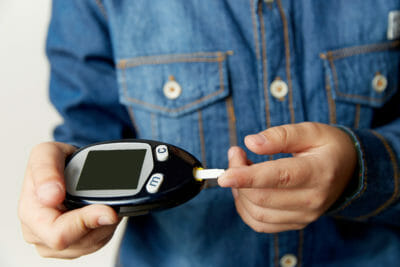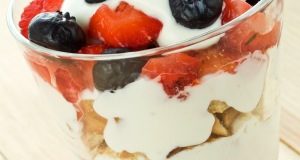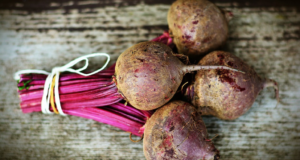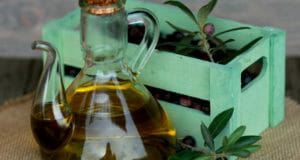
If you’re at risk of getting diabetes or already have diabetes, you should include cinnamon and ginseng in your diet on a regular basis.
Herbal medicines, which include such ingredients as cinnamon and ginseng, have gained enormous acceptability with the public in the past 10 years. They’ve accomplished this despite the fact that research in peer-reviewed journals has not supported them. This popularity spike has now been exacerbated by the entry of big money (drug companies) into the herbal market. They come along with their millions of dollars in promotional activity.
Now all the nay-sayers in the medical profession, who have been saying that herbal treatments are for barefoot doctors and goofy vegetarians, may have to eat crow. Two long-touted herbs are proving to be potent agents in the prevention and treatment of adult-onset diabetes. (This kind I like to call “nutritional diabetes,” as it’s the diabetes one gets later in life from carbohydrate and sugar abuse). In addition, the proving grounds for these two herbs, cinnamon and ginseng, are pretty impressive.
Cinnamon Maintains Your Body’s Insulin Levels
As for cinnamon, researchers from the U.S. Agricultural Research Service in Maryland say the herb may prevent diabetes by helping the body use insulin more efficiently.
The researchers have identified a chemical called “methyl hydroxy chalcone polymer” in cinnamon. It works, reports New Scientist magazine, by making fat cells more responsive to insulin. Here’s why this is important: experts call nutritional diabetes “insulin-resistant” diabetes in the trade because the body doesn’t use the insulin it has. Therefore, the blood sugar level goes up. (In childhood diabetes, the glands in the pancreas that make insulin go on strike and don’t manufacture any more insulin. This is called type I diabetes).
Nutritionist Richard Anderson of the Agricultural Research Service, said: “We recommend people take a quarter to a full teaspoon a day of cinnamon, perhaps in orange juice, coffee, or on oatmeal.” Thus far, researchers have only conducted tests on laboratory mice. However, the studies have demonstrated that the chemical in cinnamon – methyl hydroxy chalcone polymer – can reduce high levels of sugar in the blood.
Learn how to make your own herbal medicines in the comforts of your home
Scientific Studies Have Confirmed The Effectiveness Of Ginseng
The other herb that’s hitting mainstream medicine between the eyes is ginseng, a steady favorite with alternative medicine supporters. Until now, the big boys haven’t promoted ginseng because they didn’t have a “scientific handle” for it. There was nothing in the respected journals about ginseng. This is a euphemistic way of saying they didn’t have a way around the ever-watchful FDA. Now ginseng is coming out of the medicine closet because there is a very impressive report on this ancient remedy by a respected university.
Panax quinquefolius – American ginseng – is ready to be a major player in therapy for diabetes. This is because of impressive research reported in the Archives of Internal Medicine. Drs. Vuksan, Sievenpiper, Koo, Uljan, Beljan-Zdravkovic, and Xu did their research at the Department of Nutritional Sciences within the University of Toronto.
The experiment was uncomplicated and, consequently, not subject to many uncontrollable variables. This is the kind of study that you can usually trust. A group of type II diabetics was matched with healthy controls. The doctors gave them three grams of ginseng or placebo capsules. They did this either 40 minutes before, or together with a 25-gram oral glucose dose of sugar. The placebo capsules contained corn flour, in which the quantity of carbohydrates and the appearance matched the ginseng capsules. Blood samples were taken while fasting as well as periodically up to two hours after the glucose “challenge.”
In non-diabetic subjects, researchers found no differences in blood sugar levels between the placebo and ginseng when taken together prior to the glucose challenge. When ginseng was taken 40 minutes before the glucose challenge, there was a significant reduction in blood sugar in these normal subjects.
Precautions You Should Consider When Using Cinnamon And Ginseng
Important: Normal, non-diabetic people should not take American ginseng except with meals to avoid hypoglycemic symptoms, such as irritability, fainting, and nervousness.
In subjects with diabetes, the same low-sugar response occurred whether capsules were taken before or together with the glucose challenge. Reductions in blood sugar were 18-31 percent for healthy subjects and 1,922-2,217 percent for subjects with diabetes when the ginseng administered was before or together with the glucose challenge!
This is indeed an impressive finding. It’s two giant steps forward for herbal treatment of a serious disease. But be careful. This absolutely does NOT mean that you can gorge on cinnamon and ginseng and go back to your old, bad habits. It’s not that simple, as type II diabetics have found out. They thought they could just take insulin and eat all the sugar and starch they wanted. You still have to watch what you eat. There is no Santa Claus for curing diabetes.
This Powerful Supplement Is Not For Everyone!
Actions You Can Take To Manage Diabetes
Action Number One (Include Cinnamon And Ginseng In Your Diet)
If you’re at risk of getting diabetes or already have diabetes, you should include cinnamon and ginseng in your diet on a regular basis.
Action Number Two (Testosterone Therapy)
Another treatment you need to consider for treating type II diabetes is testosterone therapy. Even with severe diabetes, testosterone therapy can be of great benefit, including treatment of the dreaded diabetic retinopathy, which leads to blindness. Dr. M.L. Tainter reported in the New York State Journal of Medicine that testosterone therapy improved vision, or at least stopped the deterioration of vision, in 75 percent of cases. To find out more about this therapy, talk to an alternative-minded doctor who understands hormone therapy.
Action Number Three (Chelation Therapy)
Try chelation therapy, as it reduces insulin requirements in some cases of adult-onset diabetes.
Action Number Four (Avoid Sugar, Starch, And TV)
Stop eating so much sugar and starch (potatoes, etc.) and don’t watch so much TV. I reported a couple of months ago that watching TV causes your heart rate to slow down. When your heart rate slows down, it causes your metabolism to slow down. This negative process causes your body to burn fat slower, thereby contributing to diabetes. Instead, eat a diet rich in protein and healthy fats and go for a long walk each day if possible.
You may also enjoy reading an additional Off The Grid News article: Natural Diabetes Helpers That Optimize Metabolism And Pack On Muscle
What do you think about using cinnamon and ginseng to treat and prevent type II diabetes? Let us know in the comments below.
 Off The Grid News Better Ideas For Off The Grid Living
Off The Grid News Better Ideas For Off The Grid Living



